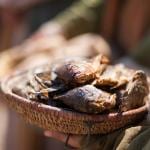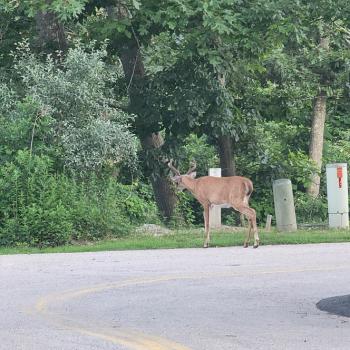One of the few bright spots during the past months of COVID-19 seclusion and insanity has been observing how non-human nature has continued its usual course through spring and summer, either blissfully ignorant of what we humans are going through or intentionally celebrating a few months free from human interference and damage. 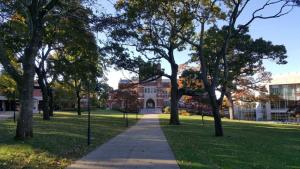 So, it was jarring when a college administrator sent an email to the college community a week or so ago indicating that, among the thirteen trees on campus identified by the city arborist as needing to be removed, one was the massive “beloved white oak” in front of our humanities building. A recent personality quiz reveals why this news made me particularly sad.
So, it was jarring when a college administrator sent an email to the college community a week or so ago indicating that, among the thirteen trees on campus identified by the city arborist as needing to be removed, one was the massive “beloved white oak” in front of our humanities building. A recent personality quiz reveals why this news made me particularly sad.
Those who have been following this blog for it’s almost eight years of existence know that I have an attraction to online personality tests that borders on the obsessive. I’ve learned many interesting things about myself from these tests, including that among the pantheon of Shakespeare’s immortal characters I am most like Lady Macbeth, my aura is yellow, and I would be Bach as a classical composer, Mr. Carson as a Downton Abbey character, and a Guinness if I were a beer.
I haven’t taken one of these in a while—fewer of them seem to come across my Facebook feed these days than in the past—so I was pleased when a Dr. Seuss quiz came along the other day. I was even more pleased with the result.
Which Dr. Seuss character are you?
You are The Lorax. You are wise and intelligent. You have strong beliefs but are also able to see both sides of every issue and you understand that not everything is black and white. You are contemplative, kind, and reflective. You never rush into something but first consider it thoughtfully from every angle.
I know, these quizzes are intended to tell the quiz taker nothing but what she or he wants to hear (except my Lady Macbeth result), but I don’t care. I’m happy if any of this description fits me even ten percent of the time. But most importantly, I am happy to be the Lorax because according to the text of Dr. Seuss’ classic tale, the Lorax “speaks for the trees.”
The Lorax was Dr. Seuss’ favorite of his multitude of books; he reportedly said that the book “came out of me being angry. In The Lorax I was out to attack what I think are evil things and let the chips fall where they might.” The evil things Dr. Seuss was angry about included corporate greed and the threat of such greed to nature and the environment. The Lorax is full of the outrageous characters one expects from Dr. Seuss. The Once-Ler tells the story of how he made a fortune crafting an impossibly useful garment, the Thneed, out of the wooly foliage of the Truffula tree—a type of tree that no longer exists.
The day the Once-Ler cuts down his first Truffula tree, a creature called the Lorax, who “speaks for the trees” because they have no tongues, emerges from the tree stump and criticizes the Once-Ler for having sacrificed a tree for such a mercenary purpose. But the Once-Ler soon finds that there is great consumer demand for Thneeds, a large factory is built, and he becomes fabulously rich. But animals who live in the Truffula forest and eat its nourishing fruit have to leave, and eventually the last Truffula tree is cut down. The Lorax says nothing but with one sad backward glance lifts himself into the air and disappears behind the smoggy clouds. Where he last stood is a small monument engraved with a single word: “UNLESS.”
I like trees. Of the dozens of creatures in Tolkien’s The Lord of the Rings, the Ents are my favorites. Trees adopt the general plant survival strategy of choosing a location that will provide sufficient food, water, and sunlight, then hunkering down in a permanent installation designed to stand up to all dangers for as long as possible—a very different plan from the animal strategy of being nimble, mobile, and capable of running away from danger. 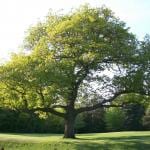 A massive red oak outside the front door of my sabbatical apartment at a Minnesota ecumenical institute over a decade ago became an iconic symbol of internal changes that I was experiencing. The introduction to my 2017 book Freelance Christianity focused on my Minnesota oak. I wrote that
A massive red oak outside the front door of my sabbatical apartment at a Minnesota ecumenical institute over a decade ago became an iconic symbol of internal changes that I was experiencing. The introduction to my 2017 book Freelance Christianity focused on my Minnesota oak. I wrote that
When I think of Collegeville, the first image that invariably comes to mind is my oak. Growth, stability, silence, fortitude, rootedness—that oak represents all of the things that I hope to have carried at least a bit from my months in Minnesota.
I closed the introduction with a verse from Isaiah: They will be called oaks of righteousness, a planting of the Lord for the display of his splendor.
As Max Ehrmann wrote, trees are children of the universe who have a right to be here. And the beloved tree that was taken down on campus has a special place in my heart. Our humanities building was built while I was director of the large interdisciplinary program that the building houses.One day shortly after the building opened in the fall of 2013, I noticed, while walking toward the building from the center of campus, that the majestic oak thirty yards or so in front, probably as old as the college itself, perfectly framed the sidewalk and stairs, inviting all to enter. Now that tree is gone, and it makes me sad.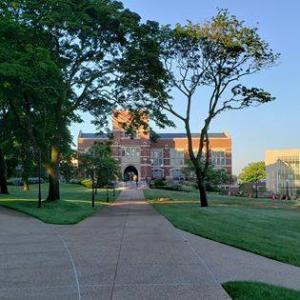
I am very concerned about the preservation of our environment, but in truth my love of trees is more personal than general. We have two trees in our front yard—Blue and Chuck—who have been part of our family for the more than two decades we have lived in our house. I love telling the story of how Blue started his life with us as a four-foot living Christmas tree in our living room during the 1996 holiday season. We were warned that there was only a 50% chance that Blue would survive the months he spent in our garage where he moved from the house after the New Year, biding his time until we planted him the next April; almost twenty-five years later,  he is now a perfectly shaped 40-foot tree whose bottom branches I have to cut off every other year, lest he overwhelm the sidewalk. Thank goodness I planted him far from any power lines—some of his upper branches are now touching the upper branches of the 70-foot oak across the street.
he is now a perfectly shaped 40-foot tree whose bottom branches I have to cut off every other year, lest he overwhelm the sidewalk. Thank goodness I planted him far from any power lines—some of his upper branches are now touching the upper branches of the 70-foot oak across the street.
Chuck joined us a year or so after Blue, a flowering miniature weeping cherry whose name comes from his similarity, as a one-branched twig when I planted him, to Charlie Brown’s iconic and sad-looking Christmas tree. I have to give Chuck, who sports lovely pink flowers in the spring, a significant haircut at least twice per summer—he rejects the “miniature” part of his description and would like to be as tall as Blue. I talk to these trees regularly, as I do to all of my outdoor and indoor plants. As with the Ents, Chuck and Blue seldom say anything. But when they do, it is worth remembering.



